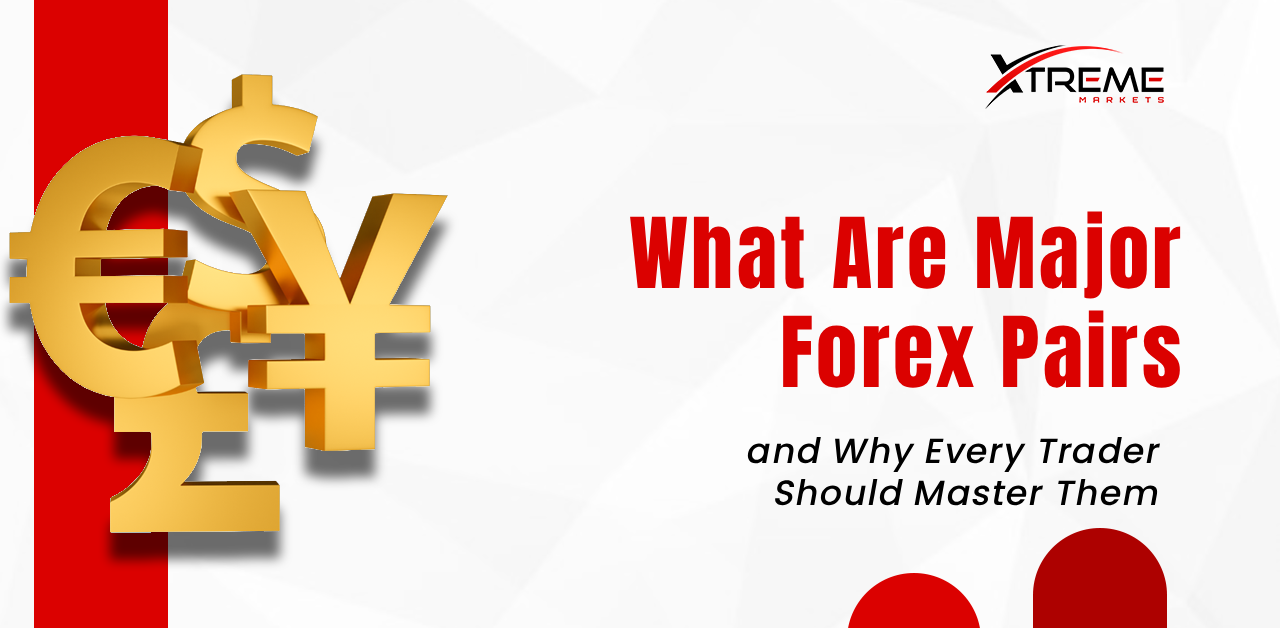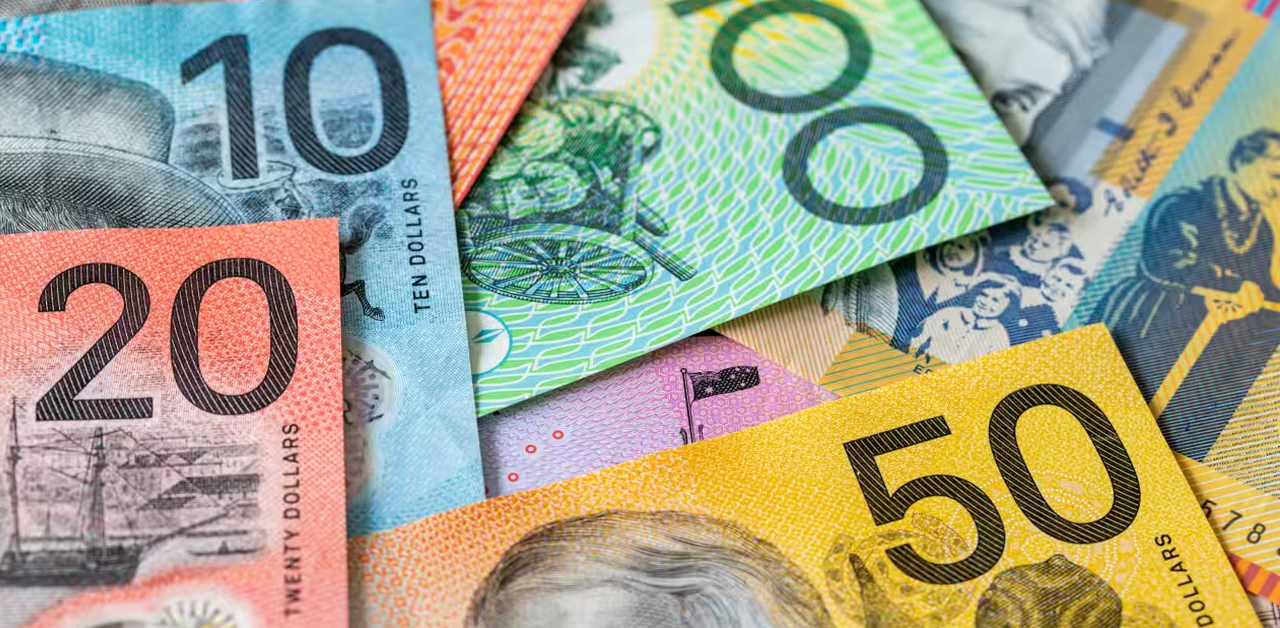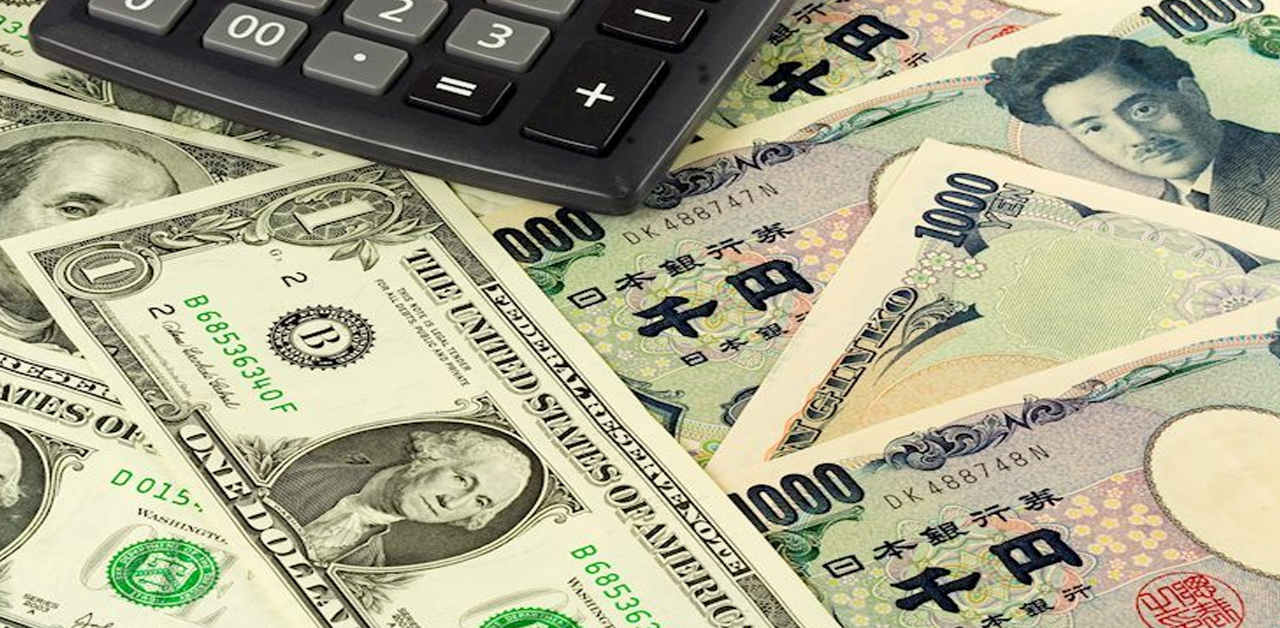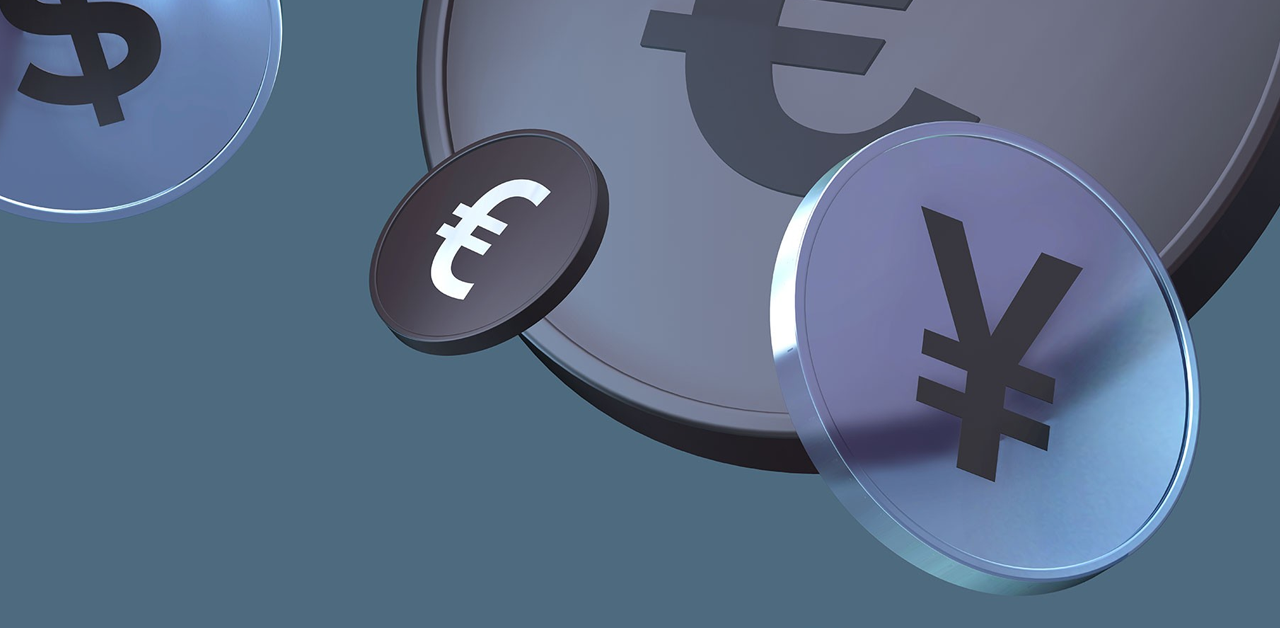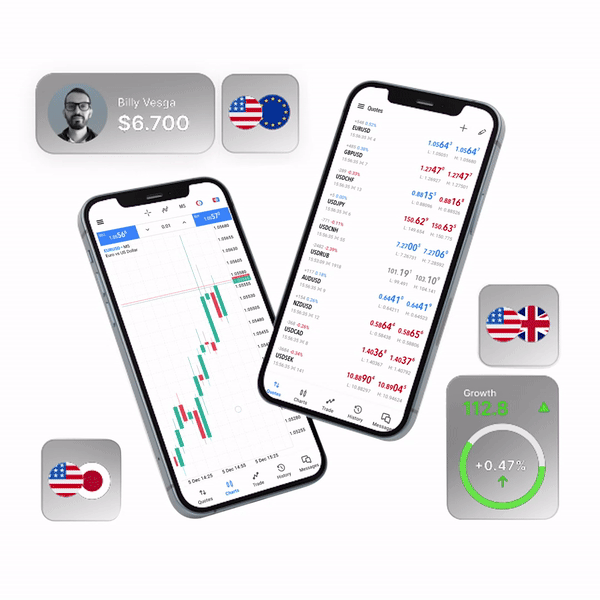If you’re serious about becoming a confident forex trader, your journey starts with the major forex pairs—the core of the global currency market. These pairs connect the world’s strongest economies and account for more than 80% of total forex trading volume each day.
Understanding how major pairs move helps you interpret market sentiment, global economic trends, and shifts in liquidity that shape price action. Each pair has its own behavior and drivers, offering valuable insights into how different regions and markets interact.
Through platforms like Xtreme Markets, traders can access these highly liquid pairs and observe how world events, central bank policies, and risk sentiment influence their movements. Mastering them builds a strong foundation for making informed trading decisions in any market condition. In this blog, you will learn more about the history of the major currency pairs, how they affect your forex trading, and other related topics. Let us begin.
Table of Contents
What Are the Major Currency Pairs, and Why Do They Matter?
Defining Characteristics
What Are the 7 Major Currency Pairs?
Market Share and Volume Data: Why the Majors Dominate
Major Currency Pairs by Estimated Share of Daily Global FX Volume
A Brief History of the Forex Majors
Key Economic Indicators That Move the Majors
Important Information to Help You Trade in Major Pairs
- Liquidity Matters to You
- Embrace Volatility and Risk Management Tips
- Inter-Market Relationships You Should Watch
- Timing and Central Bank Influence
The Psychology Behind Successful Forex Trading
Tools and Platforms That Give You an Edge
Conclusion
What Are the Major Currency Pairs, and Why Do They Matter?
In the foreign exchange market, the “major” currency pairs represent the most liquid and heavily traded instruments. This group consists of seven specific pairs, all of which include the U.S. dollar (USD) as either the base or quote currency. The majors are EUR/USD, USD/JPY, GBP/USD, AUD/USD, USD/CAD, USD/CHF, and NZD/USD.
Defining Characteristics
- Exceptional Liquidity: These pairs facilitate the highest trading volumes, enabling the execution of substantial orders with minimal market impact and slippage.
- Tight Bid-Ask Spreads: Due to their deep liquidity, major pairs consistently exhibit the narrowest spreads, reducing transaction costs for traders and institutions.
- U.S. Dollar Dominance: A defining feature of this category is the consistent presence of the U.S. dollar, underscoring its pivotal function as the world’s primary reserve and vehicle currency.
What Are the 7 Major Currency Pairs?
The forex market’s seven major currency pairs include EUR/USD, USD/JPY, GBP/USD, AUD/USD, USD/CAD, USD/CHF, and NZD/USD.
These pairs are the most actively traded in the forex market, offering high liquidity, tight spreads, and lower trading costs. They all include the U.S. Dollar (USD), which acts as the world’s primary reserve and benchmark currency.
| Currency Pair | Nickname / Meaning | Why It’s Important |
| EUR/USD | “Fiber” | The most traded pair reflects the Eurozone vs. the U.S. economy. |
| USD/JPY | “Gopher” | Tracks global risk sentiment; heavily influenced by BoJ policy. |
| GBP/USD | “Cable” | Known for sharp moves; driven by UK data and political news. |
| USD/CHF | “Swissie” | A safe-haven pair that strengthens in times of market uncertainty. |
| USD/CAD | “Loonie” | Closely tied to oil prices and North American trade. |
| AUD/USD | “Aussie” | Influenced by commodities and Chinese demand. |
| NZD/USD | “Kiwi” | Moves with global agricultural trends and risk sentiment. |
Each of these pairs behaves differently in response to global events, economic indicators, and trader psychology. As you grow more experienced, you’ll start noticing patterns—such as how AUD/USD tends to rise when commodity prices increase or how USD/JPY falls when markets fear global instability.
Market Share and Volume Data: Why the Majors Dominate
Understanding the market share of each major forex pair gives you a clear picture of why these pairs are the cornerstones of forex trading. For instance, the EUR/USD pair alone accounts for about 24% of the entire daily forex trading volume, making it the most actively traded currency pair in the world. Following closely are USD/JPY and GBP/USD, which represent significant portions of market turnover as well.
This massive liquidity means tighter spreads and faster order execution, providing you with better trading conditions and lower transaction costs. As a trader, focusing on these high-volume pairs ensures you always have access to deep liquidity, reducing risks like slippage and price manipulation.
Major Currency Pairs by Estimated Share of Daily Global FX Volume
| Currency Pair | Estimated Share of Daily Global FX Volume |
| EUR/USD | 24.00% |
| USD/JPY | 13.20% |
| GBP/USD | 9.60% |
| AUD/USD | 5.40% |
| USD/CAD | 4.40% |
| USD/CHF | 3.60% |
| NZD/USD | 2.10% |
Trading these pairs enables you to benefit from the market’s sheer size and activity, resulting in a smoother and more predictable trading experience.
A Brief History of the Forex Majors
To understand why the major pairs in forex hold such dominance, it helps to know a bit of history.
After World War II, the Bretton Woods system established the U.S. dollar as the world’s reserve currency, pegging it to gold and positioning it at the center of global trade. Even after the system ended in the 1970s, the dollar maintained its dominance thanks to the size and stability of the U.S. economy.
As international trade expanded, certain currencies—the euro, yen, pound, and Swiss franc—became primary counterparts to the dollar. Later, with global commodity growth, the Australian, Canadian, and New Zealand dollars joined the list, forming today’s seven major pairs in currency, and you can trade these on platforms like Xtreme Markets.
Key Economic Indicators That Move the Majors
Every major currency pair reacts to economic data. You don’t need to be an economist—just know which reports to watch and how they impact prices.
| Currency | Key Indicators | Typical Impact on Price |
| USD | Non-Farm Payrolls, CPI, Fed rate decisions | Strong data → USD rises |
| EUR | ECB meetings, PMI, inflation data | Weak numbers → EUR may fall |
| JPY | BoJ policy, GDP growth | Safe-haven demand → JPY strengthens |
| GBP | Inflation, Bank of England rates, and political events | Political risk → GBP volatility |
| AUD | Commodity prices, China data | Higher demand → AUD gains |
| CAD | Oil prices, employment data | Rising oil → CAD strengthens |
| NZD | Dairy export trends, RBNZ rates | Strong exports → NZD rises |
👉 Pro tip: Before placing a trade on Xtreme Markets, check the economic calendar built into your trading platform. It helps you anticipate volatility and plan entries and exits smarter.
Important Information to Help You Trade in Major Pairs
1. Liquidity Matters to You
When you trade forex major pairs, liquidity is your best friend. It refers to how easily you can buy or sell a pair without causing large price movements.
High liquidity brings three big benefits for you:
- Tighter spreads – Lower trading costs.
- Faster execution—Your orders fill almost instantly.
- More predictable price action – Less chance of slippage or erratic movement.
Trading with an ECN forex trading platform like ours, XtremeMarkets, gives you direct access to top-tier liquidity providers, meaning your trades on pairs like EUR/USD or USD/JPY are executed at real market prices with institutional precision.
2. Embrace Volatility and Risk Management Tips
While high liquidity makes the majors stable, it doesn’t mean risk-free. These pairs can still move sharply during economic announcements or unexpected events.
To manage volatility effectively:
- Always use stop-loss orders to protect your capital.
- Avoid trading right after major data releases unless you have a clear strategy.
- Track the VIX Index or volatility meters on your trading dashboard.
Example: When the U.S. Federal Reserve surprises markets with an interest rate change, EUR/USD often spikes within seconds. Having a preset stop-loss helps you stay disciplined and avoid emotional reactions.
3. Inter-Market Relationships You Should Watch
The forex market doesn’t move in isolation. Other markets constantly influence major pairs:
- Rising oil prices often boost USD/CAD and AUD/USD.
- Falling stock markets increase demand for safe havens like USD/JPY or USD/CHF.
- Higher U.S. Treasury yields generally strengthen the USD across all majors.
“When you see oil climbing or stocks falling, use that as a clue—it often tells you where the next forex move might begin.”
4. Timing and Central Bank Influence
You’ll notice the most action in major pairs when global trading sessions overlap—especially during the London–New York session. That’s when liquidity peaks and spreads are at their lowest.
Keep an eye on central bank announcements too. Events like FOMC meetings or ECB press conferences can shift sentiment instantly. If you trade EUR/USD, for instance, you’ll want to follow both Federal Reserve and European Central Bank calendars closely.
The Psychology Behind Successful Forex Trading
Technical knowledge alone isn’t enough—mindset matters just as much.
- Treat every trade like a business decision, not a gamble.
- Risk only 1–2% of your capital per trade.
- Stay calm when trades go against you—that’s part of the process.
- Keep a trading journal to review what works and what doesn’t.
Tools and Platforms That Give You an Edge
As an Xtreme Markets trader, you already have access to some of the most advanced trading technology in the industry. Use it fully:
- MetaTrader 4/5—Ideal for executing trades quickly.
- Economic Calendars—For tracking major news events.
- Demo Accounts—For testing strategies risk-free before going live.
Try tracking EUR/USD on your Market demo account — see how news events move prices in real time without risking capital.
Conclusion
In this blog, we’ve explored the core of the forex market—the seven major currency pairs that shape over 80% of global trading activity. From understanding what makes these pairs “major” to examining their market share, behavior, and the economic forces that move them, you’ve gained a complete picture of why they’re the backbone of every serious trader’s strategy.
We also looked at how factors like liquidity, volatility, inter-market relationships, and central bank policies directly influence the performance of these pairs—and how you can use that knowledge to make more informed, confident trading decisions.
Mastering the major pairs in forex gives you the foundation to trade any market with clarity and confidence. You now know what drives the 7 major currency pairs, how economic events affect them, and how liquidity, volatility, and timing all work together. With Xtreme Markets, you’re not just trading—you’re trading smarter. You gain true ECN access, transparent pricing, and institutional-grade speed, which helps you stay ahead of the curve.

